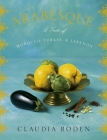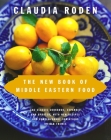
Simple Cooking
John Thorne's classic first collection is filled with straightforward eating, home cooking, vigorous opinions, and the gracefully intelligent writing that makes him a cult favorite of people who like to think about food.
Outlaw Cook

John Thorne is one of America's great food writers; he has a large cult following, which reads his quarterly newsletter, 'Simple Cooking', based in New England and begun in 1980, with dedication and enthusiasm. This book consists of material taken from that newsletter, together with other items of journalism. It is a recipe book with extensive narrative commentary. It revolves around Thorne's kitchen and the books he has read. If Margaret Visser is seen by many as a fine negotiator of the back-alleys of foodway curiosities, Thorne is more contemplative and yet tied to the stove. He resolves cookery facts and adages to produce an amalgam of thought and action at once revealing and entertaining. Thorne manages to combine plenty of thought with convincingly real, pungent, full-flavored food. The recipes are for all cooks, not chefs or artsy professionals. Critics have always loved John Thorne: 'he comes across as an inconoclast without a mean streak, an amusing but serious searcher after culinary truths'; 'one of the few writers since M.F.K. Fisher's heyday who can command readers' attentions and interest'; 'there is a dimension and resonance of experience almost never found in American food writing'; 'his meditations are intense; reading him on bread is like reading Proust on love. He cuts through mysteries at a stroke. He is keenly anti-snobbish. It its psychological penetration, this is more a novel than a cookbook.' This volume contains 90 recipes, covering the whole range of cookery, but more especially pasta, breads, soups, stews and vegetables.
Rachael really likes Claudia Roden:
 Arabesque: A Taste of Morocco, Turkey and Lebanon
Arabesque: A Taste of Morocco, Turkey and LebanonIn the 1960s Claudia Roden introduced Americans to a new world of tastes in her classic A Book of Middle Eastern Food. Now, in her enchanting new book, Arabesque, she revisits the three countries with the most exciting cuisines today—Morocco, Turkey, and Lebanon. Interweaving history, stories, and her own observations, she gives us 150 of the most delectable recipes: some of them new discoveries, some reworkings of classic dishes—all of them made even more accessible and delicious for today’s home cook.
From Morocco, the most exquisite and refined cuisine of North Africa: couscous dishes; multilayered pies; delicately flavored tagines; ways of marrying meat, poultry, or fish with fruit to create extraordinary combinations of spicy, savory, and sweet.
From Turkey, a highly sophisticated cuisine that dates back to the Ottoman Empire yet reflects many new influences today: a delicious array of kebabs, fillo pies, eggplant dishes in many guises, bulgur and chickpea salads, stuffed grape leaves and peppers, and sweet puddings.
From Lebanon, a cuisine of great diversity: a wide variety of mezze (those tempting appetizers that can make a meal all on their own); dishes featuring sun-drenched Middle Eastern vegetables and dried legumes; and national specialties such as kibbeh, meatballs with pine nuts, and lamb shanks with yogurt.
Claudia Roden knows this part of the world so intimately that we delight in being in such good hands as she translates the subtle play of flavors and simple cooking techniques to our own home kitchens.
 The New Book of Middle Eastern Food
The New Book of Middle Eastern FoodIn this updated and greatly enlarged edition of her Book of Middle Eastern Food, Claudia Roden re-creates a classic. The book was originally published here in 1972 and was hailed by James Beard as "a landmark in the field of cookery"; this new version represents the accumulation of the author's thirty years of further extensive travel throughout the ever-changing landscape of the Middle East, gathering recipes and stories.
Now Ms. Roden gives us more than 800 recipes, including the aromatic variations that accent a dish and define the country of origin: fried garlic and cumin and coriander from Egypt, cinnamon and allspice from Turkey, sumac and tamarind from Syria and Lebanon, pomegranate syrup from Iran, preserved lemon and harissa from North Africa. She has worked out simpler approaches to traditional dishes, using healthier ingredients and time-saving methods without ever sacrificing any of the extraordinary flavor, freshness, and texture that distinguish the cooking of this part of the world.
Throughout these pages she draws on all four of the region's major cooking styles:
- The refined haute cuisine of Iran, based on rice exquisitely prepared and embellished with a range of meats, vegetables, fruits, and nuts
- Arab cooking from Syria, Lebanon, and Jordan--at its finest today, and a good source for vegetable and bulgur wheat dishes
- The legendary Turkish cuisine, with its kebabs, wheat and rice dishes, yogurt salads, savory pies, and syrupy pastries
- North African cooking, particularly the splendid fare of Morocco, with its heady mix of hot and sweet, orchestrated to perfection in its couscous dishes and tagines
From the tantalizing mezze--those succulent bites of filled fillo crescents and cigars, chopped salads, and stuffed morsels, as well as tahina, chickpeas, and eggplant in their many guises--to the skewered meats and savory stews and hearty grain and vegetable dishes, here is a rich array of the cooking that Americans embrace today. No longer considered exotic--all the essential ingredients are now available in supermarkets, and the more rare can be obtained through mail order sources (readily available on the Internet)--the foods of the Middle East are a boon to the home cook looking for healthy, inexpensive, flavorful, and wonderfully satisfying dishes, both for everyday eating and for special occasions.
Molly B recommends:
It's a perverse fact of modern life: There are more starving people in the world than ever before (800 million) while there are also more people overweight (1 billion).
To find out how we got to this point and what we can do about it, Raj Patel launched a comprehensive investigation into the global food network. It took him from the colossal supermarkets of California to India's wrecked paddy–fields and Africa's bankrupt coffee farms, while along the way he ate genetically engineered soy beans and dodged flying objects in the protestor–packed streets of South Korea.
What he found was shocking, from the false choices given us by supermarkets to a global epidemic of farmer suicides, and real reasons for famine in Asia and Africa.
Yet he also found great cause for hope—in international resistance movements working to create a more democratic, sustainable and joyful food system. Going beyond ethical consumerism, Patel explains, from seed to store to plate, the steps to regain control of the global food economy, stop the exploitation of both farmers and consumers, and rebalance global sustenance.
 Animal, Vegetable, Miracle
Animal, Vegetable, MiracleAuthor Barbara Kingsolver and her family abandoned the industrial-food pipeline to live a rural life—vowing that, for one year, they’d only buy food raised in their own neighborhood, grow it themselves, or learn to live without it. Part memoir, part journalistic investigation, Animal, Vegetable, Miracle is an enthralling narrative that will open your eyes in a hundred new ways to an old truth: You are what you eat.
April suggests:
 A Natural History of the Senses
A Natural History of the SensesDiane Ackerman's lusciously written grand tour of the realm of the senses includes conversations with an iceberg in Antarctica and a professional nose in New York, along with dissertations on kisses and tattoos, sadistic cuisine and the music played by the planet Earth. "Delightful . . . gives the reader the richest possible feeling of the worlds the senses take in."--The New York Times.
Kathy E really likes:
 Ratio
RatioWHEN YOU KNOW A CULINARY RATIO, IT'S NOT LIKE KNOWING A SINGLE RECIPE, IT'S INSTANTLY KNOWING A THOUSAND.
Why spend time sorting through the millions of cookie recipes available in books, magazines, and on the Internet? Isn't it easier just to remember 1-2-3? That's the ratio of ingredients that always make a basic, delicious cookie dough: 1 part sugar, 2 parts fat, and 3 parts flour. From there, add anything you want -- chocolate, lemon and orange zest, nuts, poppy seeds, cinnamon, cloves, nutmeg, almond extract, or peanut butter, to name a few favorite additions. Replace white sugar with brown for a darker, chewier cookie. Add baking powder and/or eggs for a lighter, airier texture.
RATIOS ARE THE STARTING POINT FROM WHICH A THOUSAND VARIATIONS BEGIN.
Ratios are the simple proportions of one ingredient to another. Biscuit dough is 3 : 1 : 2 -- or 3 parts flour, 1 part fat, and 2 parts liquid. This ratio is the beginning of many variations, and because the biscuit takes sweet and savory flavors with equal grace, you can top it with whipped cream and strawberries or sausage gravy. Vinaigrette is 3 : 1, or 3 parts oil to 1 part vinegar, and is one of the most useful sauces imaginable, giving everything from grilled meats and fish to steamed vegetables or lettuces intense flavor.
Cooking with ratios will unchain you from recipes and set you free. With thirty-three ratios and suggestions for enticing variations, Ratio is the truth ofcooking: basic preparations that teach us how the fundamental ingredients of the kitchen -- water, flour, butter and oils, milk and cream, and eggs -- work. Change the ratio and bread dough becomes pasta dough, cakes become muffins become popovers become crepes.
As the culinary world fills up with overly complicated recipes and never-ending ingredient lists, Michael Ruhlman blasts through the surplus of information and delivers this innovative, straightforward book that cuts to the core of cooking. Ratio provides one of the greatest kitchen lessons there is -- and it makes the cooking easier and more satisfying than ever.

No comments:
Post a Comment